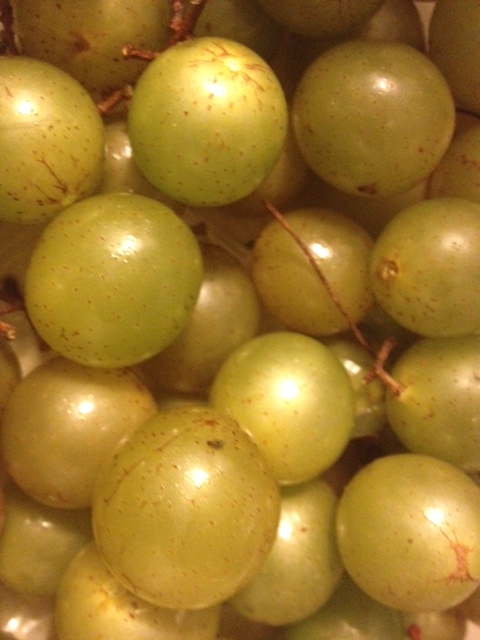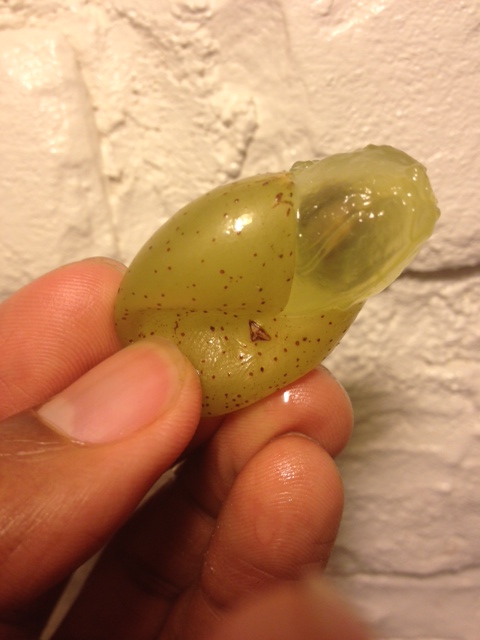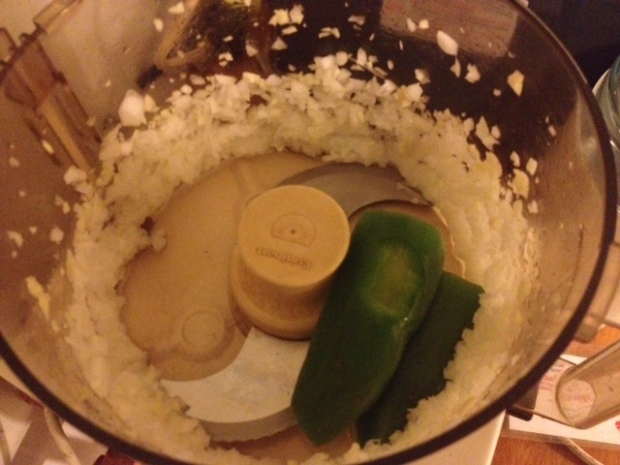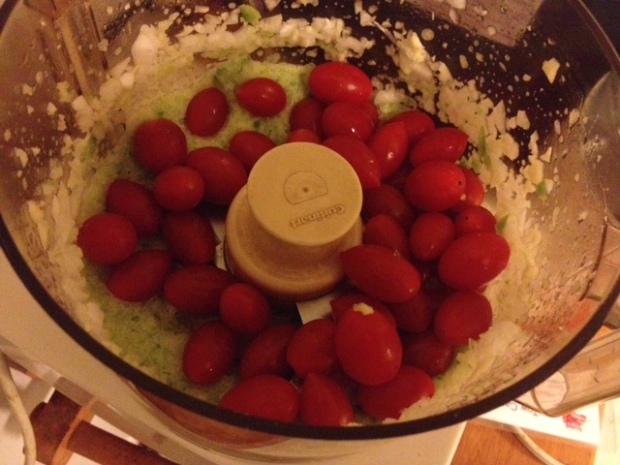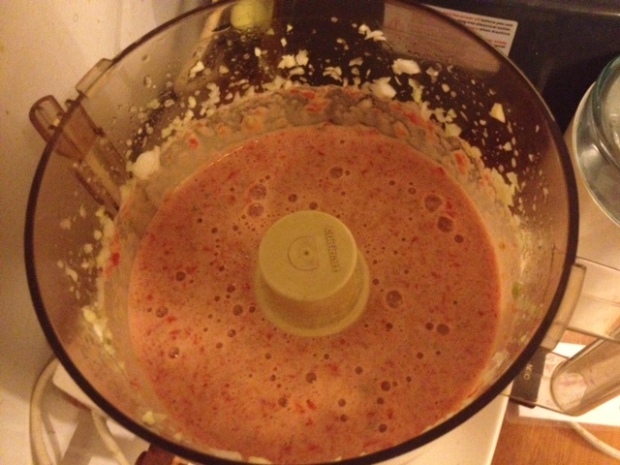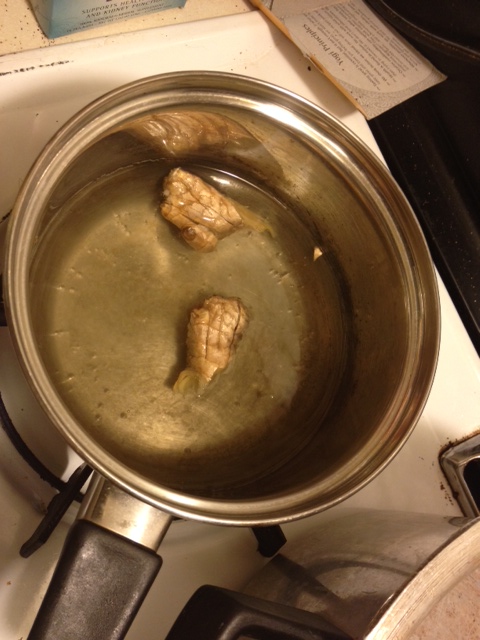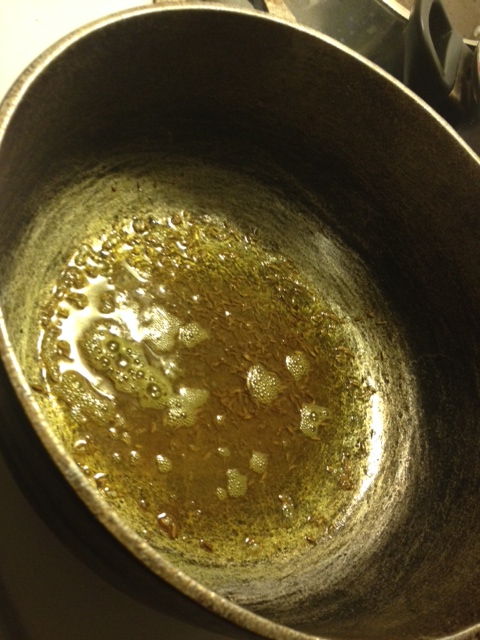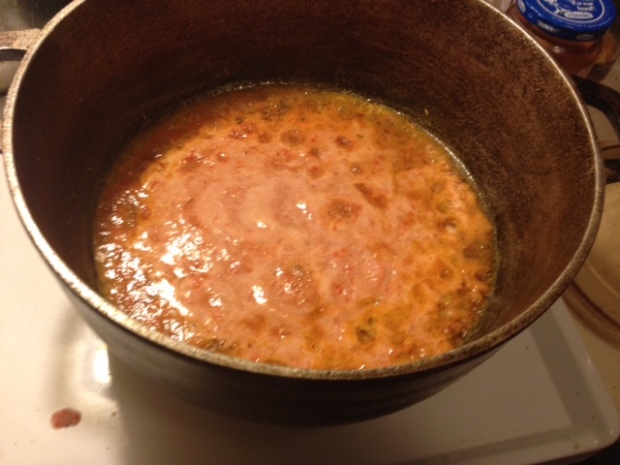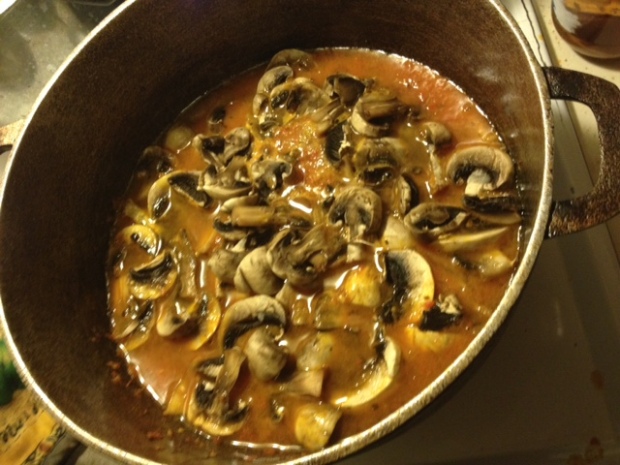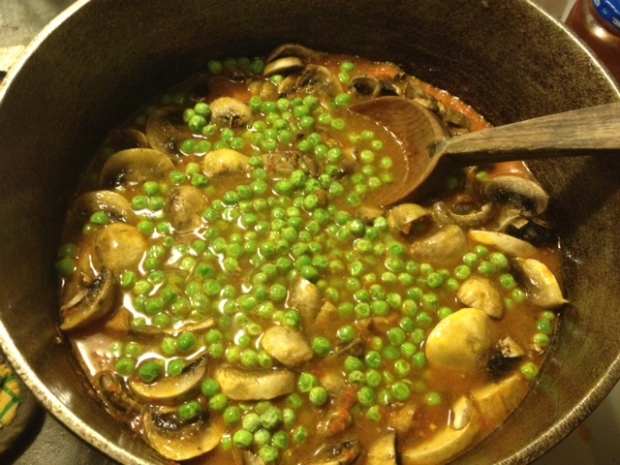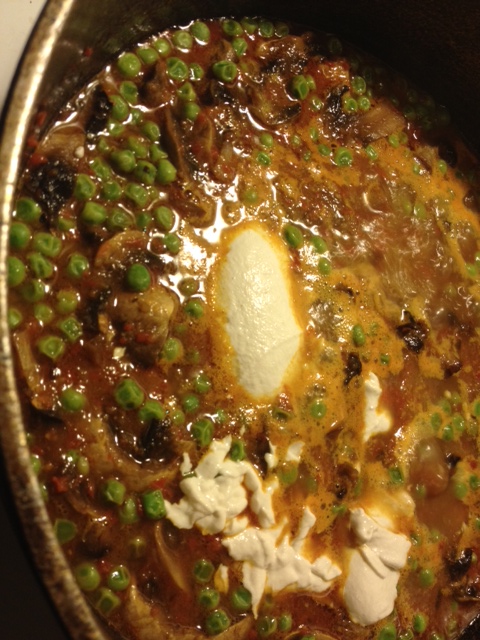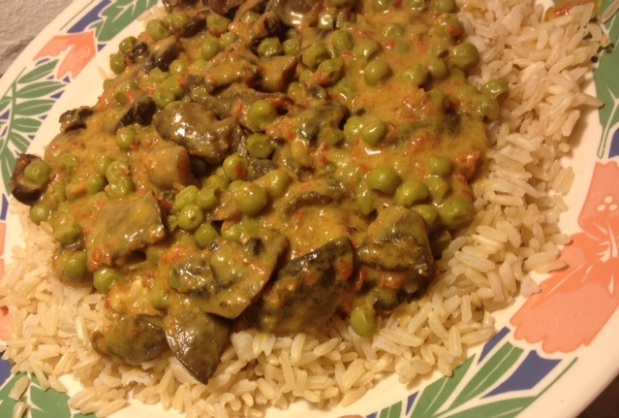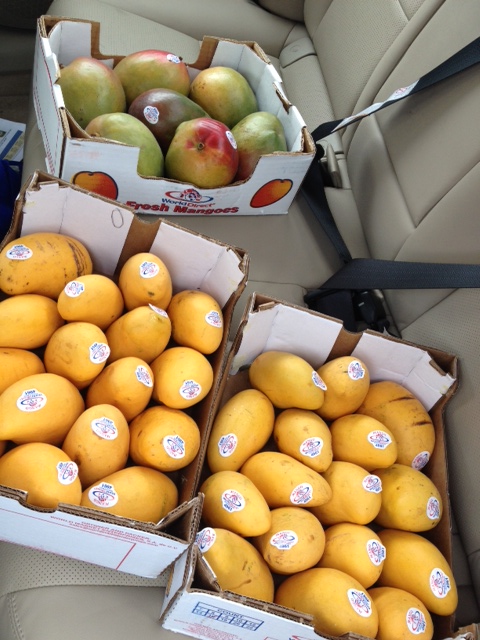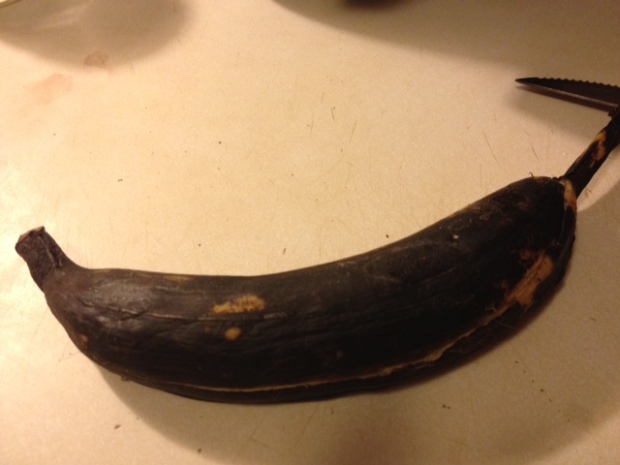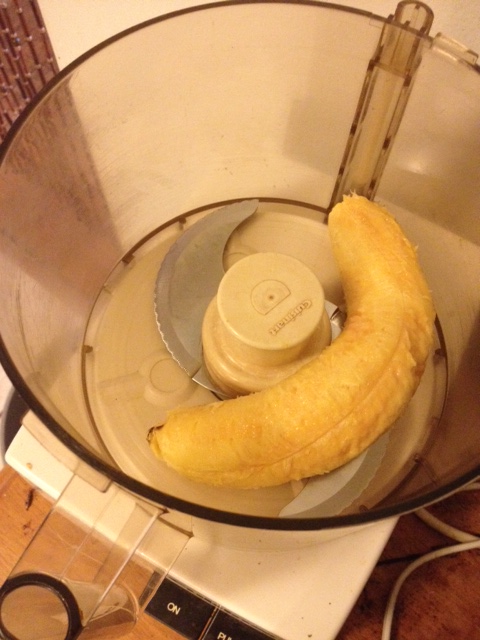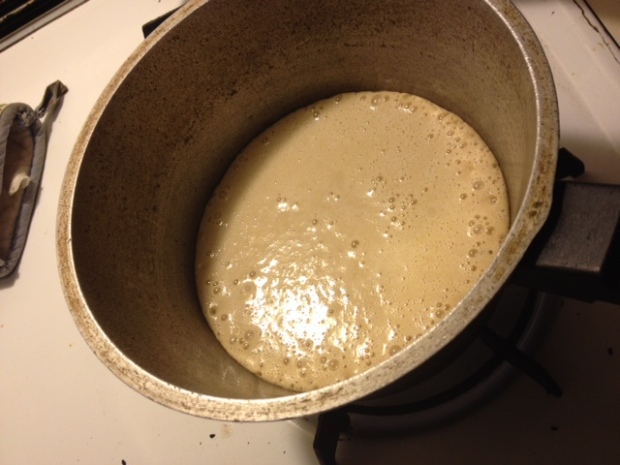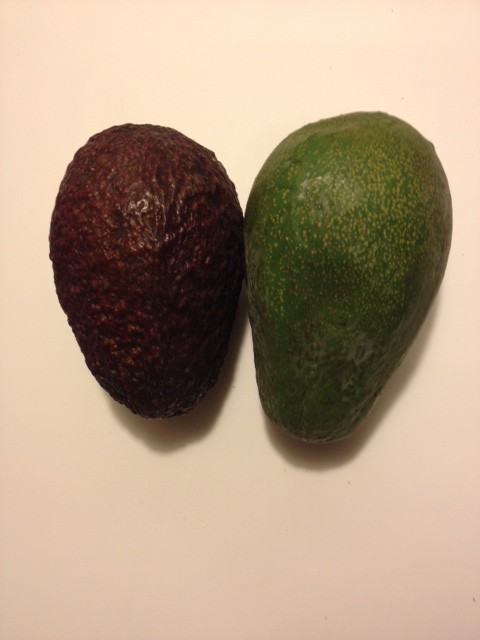I’ve decided to have my not so new hobby of homebrewing vegan wines (no not all wines are vegan) be at least a partial excuse for not having posted a new entry on here for over a year and a half; there are others which I may mention later.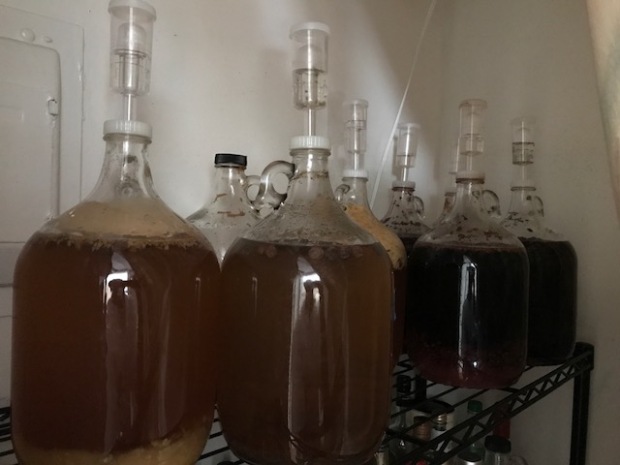 This is my fourth year doing it and having gotten better at it over that time, I’ve gotten more consistent with it also. I now sell them locally (Washington D.C. area) and happily pass them out as gifts for special occasions. If you are in my neighbourhood and interested in a bottle, feel free to reach out anytime.
This is my fourth year doing it and having gotten better at it over that time, I’ve gotten more consistent with it also. I now sell them locally (Washington D.C. area) and happily pass them out as gifts for special occasions. If you are in my neighbourhood and interested in a bottle, feel free to reach out anytime.
#18 – Cassava Leaf Stew
A few years ago I decided to check how deep I could dig into the roots of my family tree and from doing so I discovered that prior to the Caribbean, some of the heredity stemmed from Sierra Leone. I was encouraged to learn more about the country because of this which eventually led me to some of their favourite cuisine, with cassava leaf stew being one I now can make pretty well.
It is customarily made with chicken and/or fish but my substitute for these is jackfruit, which has been growing in popularity as a meat replacement.
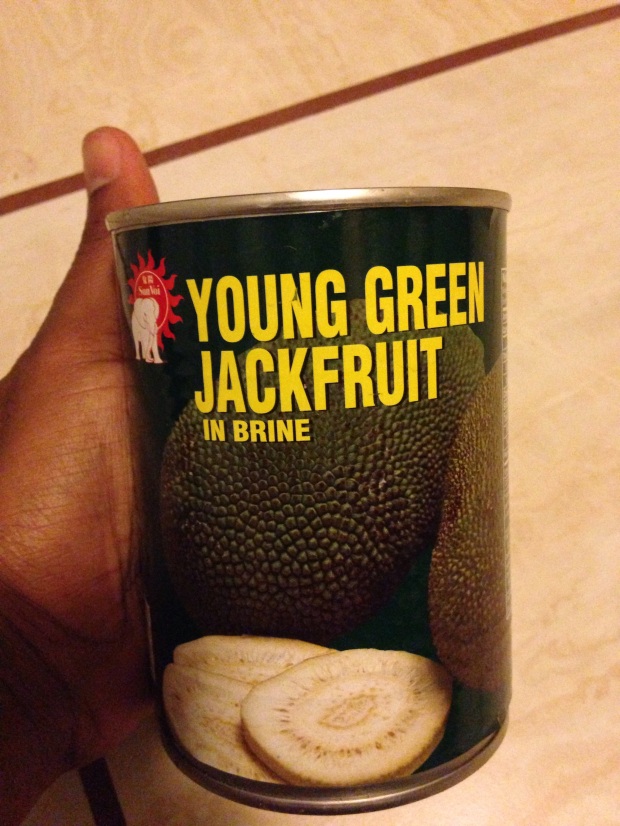
Note that there are two types of the canned version – green/unripe and yellow/ripe. The former is what should be used as the meat substitute, the latter is sweet and more ideal for desserts. The rest of items needed to make the stew are:
1 cup vegetable broth
1/2 cup chopped onion
1/2 cup sweet pepper
1/2 cup peanut butter
2 TBS dulse
2 TBS palm oil
1 TBS salt
1 TSP garlic powder
1 TSP kelp
1 TSP cayenne
The cassava leaves need to cook longer than other kinds of greens to tenderize so I make mine in the slow cooker. The pressure cooker could also be used to save time but a little more work is involved if you don’t want to “melt” the other ingredients. With the slow cooker, simply liquefy the peanut butter in the vegetable broth then throw everything into the slow cooker.
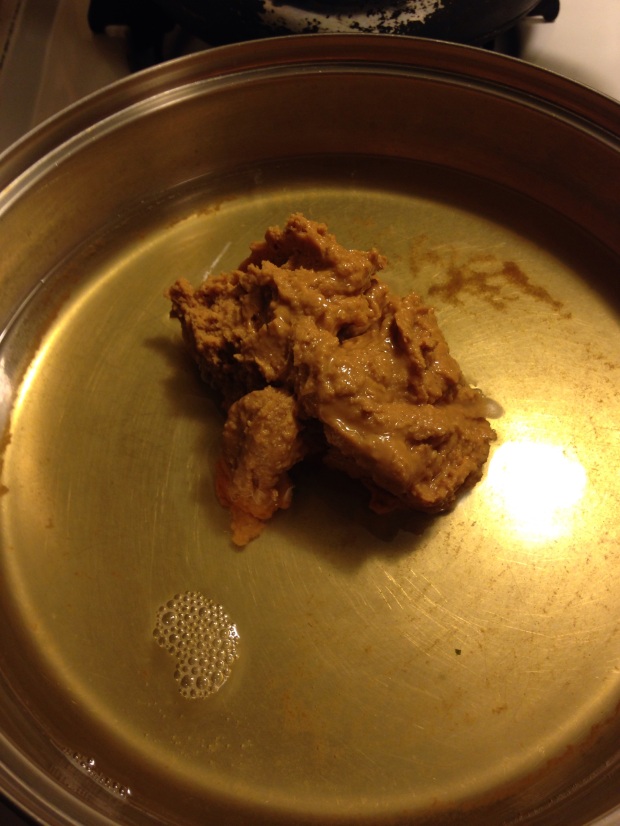
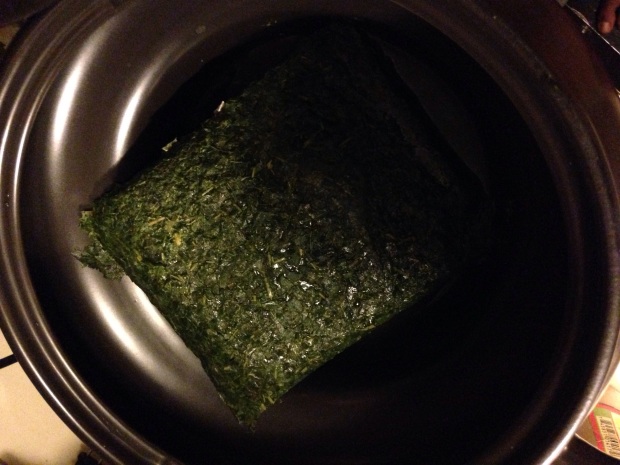
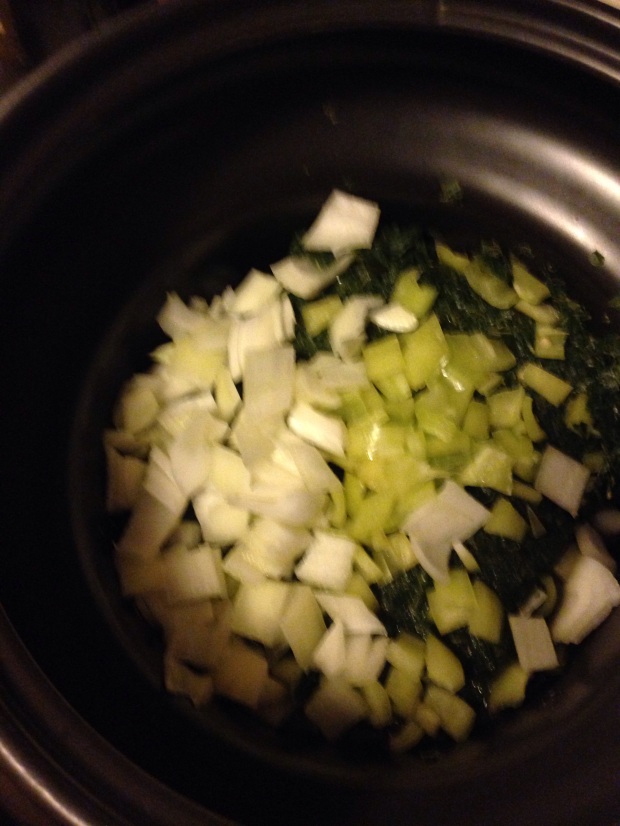
Give it a good stir
Go do something fun for 8 hours and then plate it with some rice.
#17 – FRUIT FASCINATION: Scuppernong Grapes
If I was to make a list of fruits I am most fascinated with, Scuppernong grapes would definitely be among the top picks. This can be said of their entire parent species, Muscadine, but I like the green/bronze Scuppernong variety in particular the most.
At least in the DC area, I rarely see them in stores so most times you have to have a “connect” to get them – someone who knows someone who knows someone that personally grows & sells them. Luckily, they are the state fruit of North Carolina, just a few hours away from DC, so establishing a “connect” to get them isn’t too difficult. I often compare them to contraband smuggled across state lines because of this process.
They are unique in how they grow which is individually instead of in clusters like most other species of grapes. Also, they require a rather specific climate so you are forced to eat them in their natural season because of this (mid-summer – mid-autumn), versus getting those red/green/black seedless grapes from ????? year round.
If you’ve never eaten one, there is a slightly thick skin to it which is edible but not too appetizing so most people only eat the sweet inner part, easily squeezed out when the grapes are fully ripe (doing so can be considered as a way to check if they are ripe or not yet).
I can imagine people only used to those year-round seedless grapes thinking that this might be too much work but many people think that the taste of the Scuppernongs are well worth it, myself obviously among them.
#16 – Mushroom Matar
Indian (from India, not Native American… for whom the nickname to me is a pet-peeve FYI) is probably my second favourite ethnic cuisine after that of the Caribbean. Very often, the latter is an off-shoot of the former because much of the Caribbean is inhabited by desendents of migrants from India, and they brought their style of cooking along to the new environment. Seems like they wanted to pack light though, because in comparing the two, there is definitely a very large amount of Indian eats which are popular in their country, yet often unheard of in the Caribbean. Mushroom Matar is one such example; here’s how to make it:
Ingredients:
1.5 cup tomato
3/4 cup onion
1 jalepeno
4 cloves garlic
1 TBS ginger
2 cups sliced mushrooms
1 cup green peas
1/2 cup yogurt (this kind – https://worldveganizer.wordpress.com/2015/01/04/12-cashew-yogurt/ )
2 TSP cumin
1 TSP tumeric
2 TSP salt
1 cup water
2 TBS olive oil
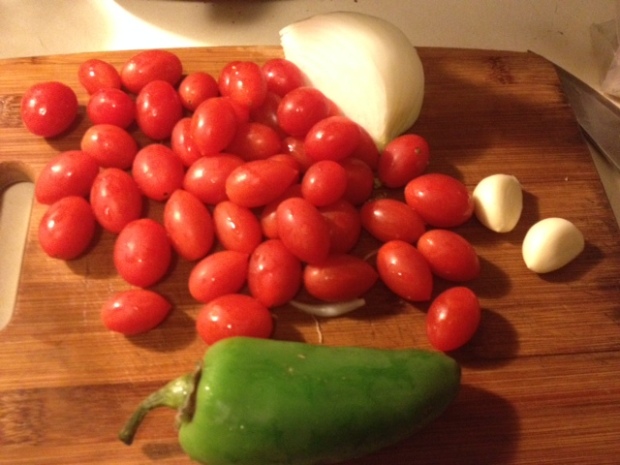 If you have a food processor, put the first 5 ingredients in, from firmest to softest, running it for each one (if you don’t have a food processor, chop/dice/mince… the smaller you cut, the faster it will cook).
If you have a food processor, put the first 5 ingredients in, from firmest to softest, running it for each one (if you don’t have a food processor, chop/dice/mince… the smaller you cut, the faster it will cook).
My ginger was a bit aged and dried up so I made a tea with it and used that for the cup of water needed in the recipe.
After everything is processed/cut up, heat the oil in your pot then add the cumin and tumeric.
Fry for about a minute then add the processed/cut up mix.
Cook until this mixture reduces/thickens noticeably then add water (tea in my case), salt, mushrooms, and peas.
When the mushrooms have tenderized, stir in the yogurt, and boil another 10 minutes.
After that it’s done. I like mine with rice. I remember thinking I didn’t put enough photos in the last post so hopefully this makes up for it.
#15 – Fry Bake = Fry Bread
Another cuisine post to spotlight my heritage a bit: Fry Bake. In Trinidad & Tobago, this is basically a bun for sandwiches which is fried (obviously?… the name may be a little confusing) instead of baked. Besides words on how to make it though, I want to acknowledge where modern-day T&T’ers got it from: Native Americans. I’m not sure it is common knowledge there and similarly, I’m not sure if the indigenous American folks know that it is adored there so much.
Just about all Native American tribes have their version of Fry Bake – some as big as a pizza, some with holes in the middle, some identical to T&T’s, and other variations, which they perhaps more appropriately named/call Fry Bread. Serving it seems to be the biggest difference I’ve noticed with T&T splitting it in half while Natives usually have it whole. Whichever way it’s served though it’s delicious, thus it’s popularity and I personally want to thank the Caribs and Arawaks for the recipe.
Now how to make it…
Ingredients:
1 cup unbleached flour
1 tbs baking powder
1 tbs sugar
1 tsp salt
1/2 cup water
Mix dry ingredients then add water to make soft dough.
Roll the dough out to 1/4 inch thickness then use a glass to cookie-cut the dough into circles (I know a photo of this step may have been helpful; apologies for not getting one). Fry each in preheated oil, turning to make sure each side is browned. Spooning the oil on to it while it is cooking will help it inflate.
And that’s it. This last time I made it I had it with mock buljol, baigan choka, and pumpkin talkari. “What’s that?” you ask? Stay tuned…
#14 – B(U)Y the Case
Anyone who has gone shopping before probably knows that it is cheaper to buy things wholesale which may be the main motive for doing so, but when it comes to produce, health is another incentive people may not always consider. If you have one box instead of one pound of fresh fruits/vegetables, it is predictable that you would want to use it all before it goes bad and consequently the money spent on it is wasted. Doing so would force you to fill your belly with them rather than pre-made foods that probably will be more expensive and/or less healthy. It would also assist the development of one’s skills in the kitchen, presuming eating the fruits/vegetables the exact same way every time would get monotonous.
Mango season seems to be peaking at the moment so they are my latest way of practicing what I’m preaching here.
#13 – Plantain Porridge
Despite plantains probably being considered to be somewhat of an exotic edible by USA natives, from birth it was a common sight for me at breakfast and dinner – at least biweekly. One might presume having them that often would mean having them in various ways but nope – it was always the black, over-ripe ones fried for breakfast and the yellow ripe ones boiled for dinner (we never partook of the unripe green ones even though we almost just as often ate the sibling green banana)… just plain either way; never even a pinch of seasoning. At best the way they were sliced might get varied depending on who was preparing them.
Eventually getting to adulthood and interest + experience in the kitchen, I came upon many other ways to prepare them and plantain porridge is one of my favourites. Here is my method:
You can use black, yellow, or green plantains to make it, though I prefer to use black because it usually results in not needing any additional sweetener. The taste also between the three is slightly different. Depending on how lumpy you like your porridge, you may want to mix it with a machine – food processor, blender, etc. I like mine silky smooth so I used the food processor…adding the almond milk and spice slowly while it was running (this is the best way for adding liquids to a food processor; to put it in before it starts creates a risk of it spilling out… I’m not an expert on the physics which cause that to remark on the reason why).
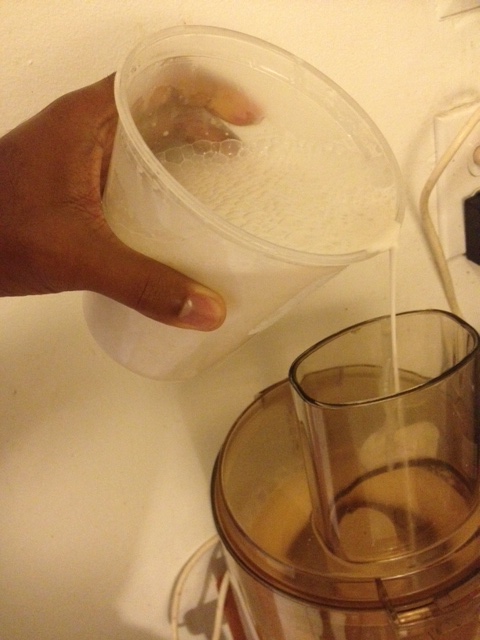 The ratio I like is about 3/4 cup milk for each plantain (again I never really measure stuff; this is a guesstimate). After everything is well mixed, simmer it for 5 minutes and its ready.
The ratio I like is about 3/4 cup milk for each plantain (again I never really measure stuff; this is a guesstimate). After everything is well mixed, simmer it for 5 minutes and its ready.
#12 – Cashew Yogurt
There are many Indian & Middle East stews, sauces, and dressings which call for yogurt as a main ingredient. At most health food stores these days vegan yogurt is pretty easy to find to provide a good dairy-free alternative for those recipes (as well as flavoured variations to eat right out of the container of course), however, making it yourself in my opinion is so easy that buying it is unnecessary and perhaps undesirable as well if one has the wherewithal to get a much fresher batch. Here is the technique:
Soak 1 cup cashews 8 hours or overnight. Strain then run through blender with 1/2 cup water until smooth. Pour into glass container.
Cover with something breathable like a cloth or similar fabric, leave at room temperature for 12 – 18 hours and it’s done.
Looking closely you can see bubbles formed in it after the sitting time which is the indicator that the natural, air-borne friendly bacteria have commenced their fermenting party. Cover, store in the fridge and use within one week.
#11 – FRUIT FASCINATION: Fuerte Avocado
If you do your food shopping exclusively at conventional supermarkets, you might be led to believe that the only fruits which have multiple types are apples, peppers, tomatoes, grapes, and pears. Theoretically this is due to there being limited space in the supermarkets and the owners choosing to sell only what is least expensive. For the average person this fact may not be a big deal but for a fruit enthusiast like me there is often a need for more variety and obtaining it a priority. I barely ever go into the conventional supermarket for this reason and instead about 80% of the time at international groceries and the other 20% split between online ordering and farmers markets.
One fruit subject to the produce section limitations is the avocado. The type you are likely to see in the store, at least here in the mid-Atlantic coast is the Hass. They are delicious, but I’ve had a few other kinds which I would say are just as tasty, if not more-so. The Fuerte is the one I most recently put extra effort into getting.
Comparing it in the photo above to the Hass (left), they are both at the fully ripe stage here. They are about the same size with the noticeable differences being the skin texture and colour: Hass – rough & dark purple/black, Fuerte – smooth & green. They both look about the same on the inside.
Taste-wise, there is a significantly different flavour as well. I wouldn’t say better/worse than the Hass… but for a point of reference, it’s comparable to a red delicious apple versus a gold delicious apple.
#10 – Oil-Free Eats: T&T Style Corn Soup
Oil-free dishes will be my third series on the blog. Oils AKA fats are essential and beneficial to have in the body for various reasons with calorie concentration probably being the biggest benefit (one tablespoon of olive oil contains about ten times the amount of calories that one tablespoon of olives do). However, the intake of large quantities of calories is only a good thing if they are being utilized via physical activity. If they are not, an unnecessary surplus can build-up in the body which encourages weight gain. So, for those times of the day in which we know we will not be too physically active yet still have an appetite, I think eating oil-free should be the advocated.
Trinidad & Tobago style corn soup is one dish I have mastered making oil-free and as the final part of the brazil nut topic, I threw the dumplings into it.
Ingredients:
2 ears of corn chopped
3 cups vegetable broth
1/2 cup yellow split peas
1/2 cup chopped onion
1/2 cup coconut milk*
1/4 cup chopped celery
1/2 cup chopped potato
1 cup brazil nut dumplings
1 TBS T&T green seasoning**
Salt & pepper to taste
Directions:
Rinse split peas and soak 8 hours. Add to pot with water to cover, boil until liquified then add vegetable broth and corn. For those whom have never chopped corn, it is probably easiest with a cleaver. The pieces should look like this
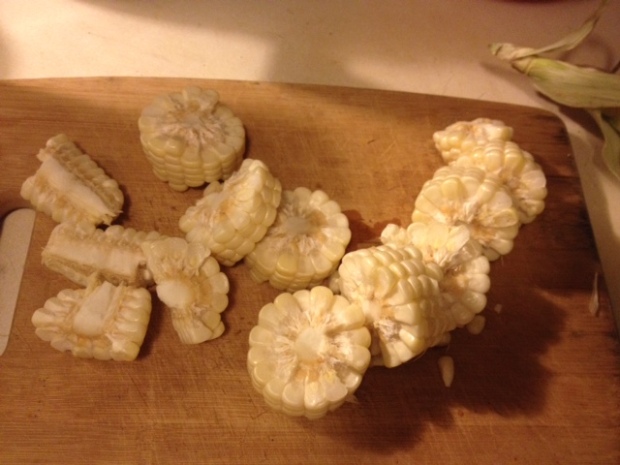 Bring back to boil for 10 minutes then add all other ingredients except coconut milk and dumplings. After 10 more minutes add coconut milk and dumplings. Be sure to stir periodically and when the dumplings float it’s done.
Bring back to boil for 10 minutes then add all other ingredients except coconut milk and dumplings. After 10 more minutes add coconut milk and dumplings. Be sure to stir periodically and when the dumplings float it’s done.
*heating coconut milk is a means of making coconut oil and thus depending on individual technicalities, this might disqualify the soup as being oil-free
** T&T green seasoning – a ground combination of equal parts cilantro, thyme, scallions, garlic, and parsley using vinegar to assist grinding process and act as a preservative. Found bottled in international supermarkets if you’re not up for making your own.






